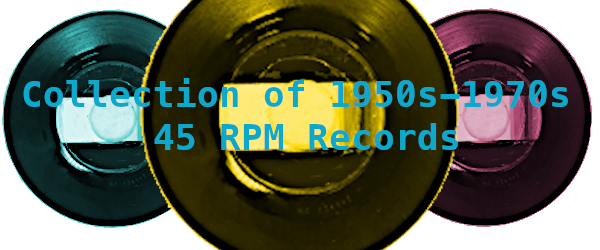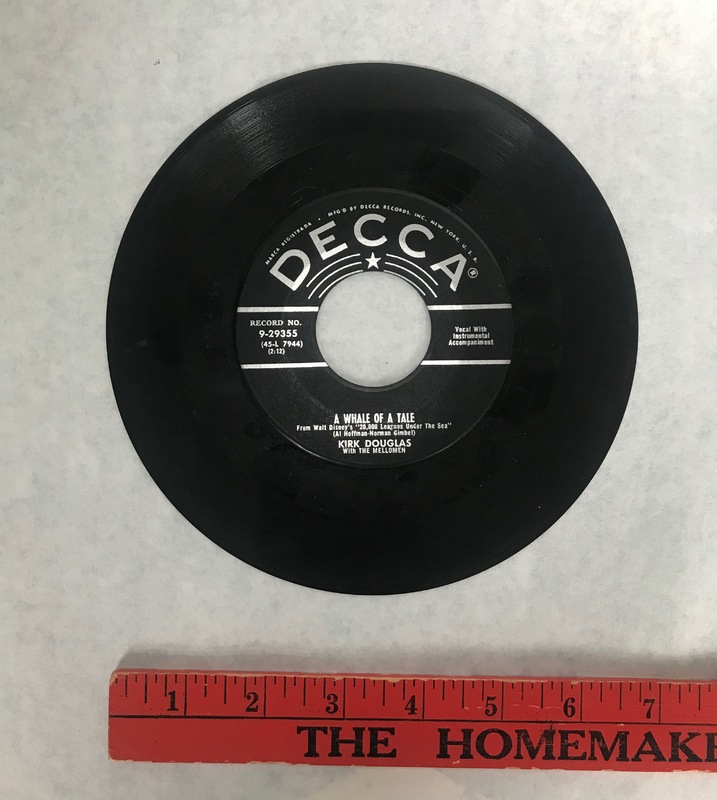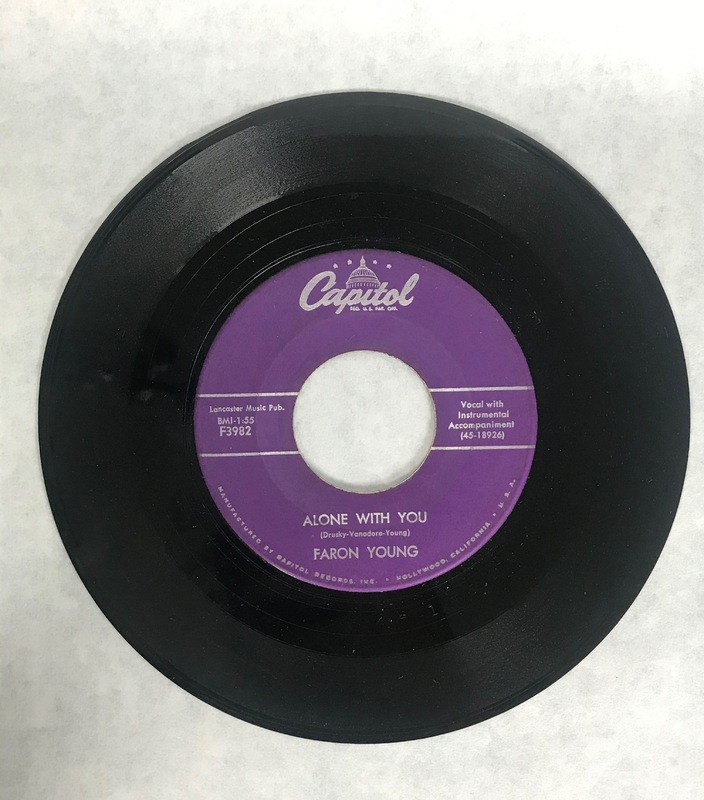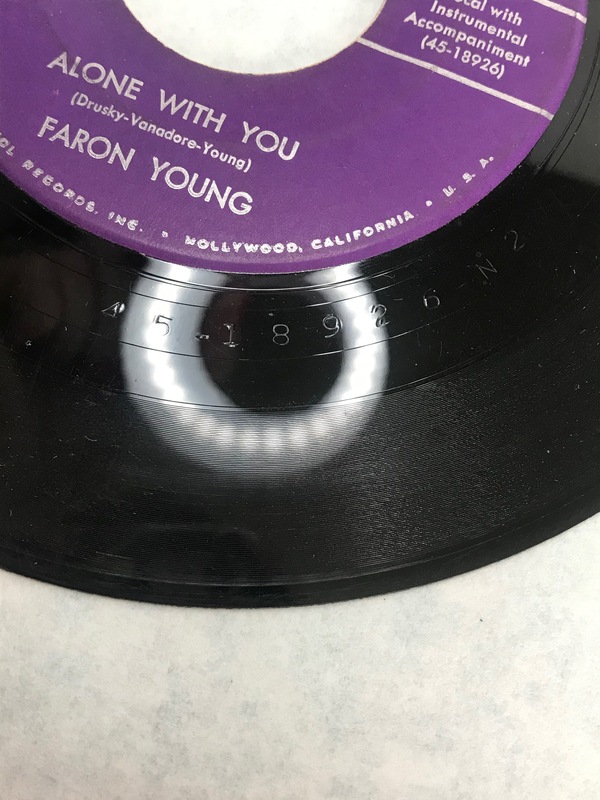About 45 RPM Records
What is a 45 RPM Record? and a little bit of History:
45 RPM records are also known as "7-inch"(s) due to their physical diameter and are a record single format of phonograph record. The 45 RPM refers to their play speed of 45 revolutions per minute on a record player. The first 7-inch 45 RPM record was released March 31, 1949 by RCA Victor. According to Spencer Drate's book 45 RPM: A Visual History of the Seven-Inch Record RCA used the 45 RPM speed based on calculations by Bell Laboratory scientist J. P. Maxfield who concluded that three minutes per radial inch was the "best compromise between adequate signal-to-noise ratio and playing time" based on his "analysis of groove structure and associated problems for the Vitaphone Film Company in 1927". Quoted in Drate's book, Peter Copeland of the British Library National Sound Archive explains "Calculus was used to show that the optimum use of a disc record of constant rotational speed occurs when the innermost recorded diameter is half the outermost recorded diameter. That's why a 7-inch single has a label 3 1/2 inches in diameter. "
"Phonograph records", also called "gramophone records" or "records", are an "analog sound storage medium in the form of a flat disc with an inscribed, modulated spiral groove" as defined on Wikipedia. The early phonograph records, were originally made from shellac but in the 1940s, shellac was replaced with polyvinyl chloride . The earliest form of the phonograph record was the cylinder recording invented by Thomas Edison in 1877.
Anatomy of a 45 RPM Record:
The 45 RPM record is made of polyvinyl choloride and is 7-inches or 175mm in diameter. According to Wikipedia, the structure of a phonograph is " engraved with two sound-bearing concentric spiral grooves, one on each side, running from the outside edge towards the center. The last part of the spiral meets an earlier part to form a circle. The sound is encoded by fine variations in the edges of the groove that cause a stylus (needle) placed in it to vibrate at acoustic frequencies when the disc is rotated at the correct speed.""There is an area about 3 mm (0.12 in) wide at the outer edge of the disk, called the lead-in or run-in, where the groove is widely spaced and silent. The stylus is lowered onto the lead-in, without damaging the recorded section of the groove.""Towards the center, at the end of the groove, there is another wide-pitched section known as the lead-out. At the very end of this section the groove joins itself to form a complete circle, called the lock groove; when the stylus reaches this point, it circles repeatedly until lifted from the record. " At the center of the record, 45 RPM singles have a hole about 1 1/2 inches, in contrast to the smaller spindle hole of 12-inch and 10-inch phonograph records. This center hole requires the use of a special adapter or insert in order to play the record.
The center label contains descriptive information about the single as well information specific to each side of the single, including the song, recording artist, record company, manufacturer, songwriter(s), composer(s), catalog number and song duration.
Surrounding the label, within the lead-out section of the disc, there is a stamped or handwritten number which is called the Matrix Number. According to Wikipedia, these are intended for the purposes of the company manufacturing the record but the numbers can provide information related to the edition of the record as well. The main number of the Matrix number designates a "filing number to the stamper, and to ensure each side receives the proper label, by visually comparing the number on the label to the inscribed number." The extra information included in the Matrix number is usually a cut number. The Matrix number may also include "record plant codes or logos, the initials or signature of the disc cutting engineer, and cutting or copyright dates".
How to Play a 45 RPM Record:
A 45 RPM record can be played on a phonograph player, record player or turntable with the option for 45 revolutions per minute playing speed. If not included with the record player, a special adapter or insert will be needed in order to place the record on the spindle in the center of the record player. Once the adapter is in place in the center hole of the 7-inch record, or placed on the record player on the spindle, the 45 RPM or 7-inch record can be placed on the player.
Watch a video of the use of a 45 RPM adapter being inserted into a record.
A stylus or needle, usually attached to an "arm" can then be lowered into the lead-in section on the outer part of the record. The record can now be played by a manual play button or switch, or the turntable platform may automatically start rotating once the arm is lowered and stylus in place.
Pictured Right: Arthur Fiedler of the Boston Pops demonstrating the RCA 45 rpm phonograph and record in February 1949.



